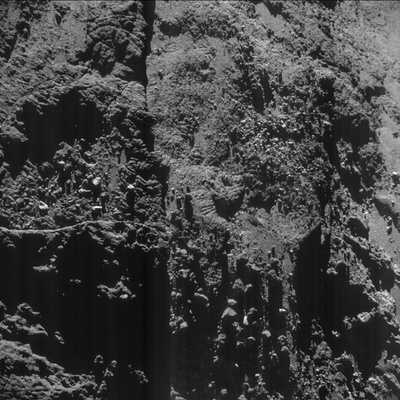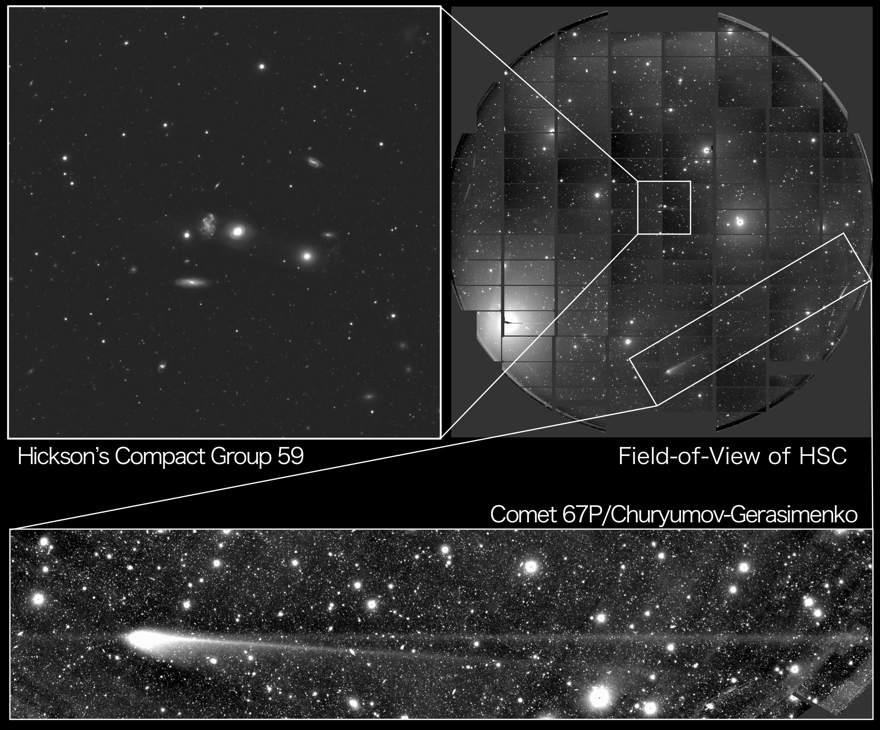CometWatch 19 May
This close-up view shows a portion of the comet's southern hemisphere, on the large lobe, around the Bes region. The image reveals the diverse appearance of the surface on this portion of the nucleus, with rugged and smooth patches, several cross-cutting fracture lines and a multitude of boulders of various sizes.
Also released this week was an impressive view captured by Rosetta's OSIRIS wide-angle camera of the nearby Imhotep region, also on the large comet lobe. The image, taken only 7 km from the nucleus centre (about 5 km from the surface) on 25 May, is dominated by boulders.
OSIRIS wide-angle camera image taken on 25 May 2016, when Rosetta was 7.0 km from the centre of Comet 67P/C-G. The scale is 0.69 m/pixel. Credits: ESA/Rosetta/MPS for OSIRIS Team MPS/UPD/LAM/IAA/SSO/INTA/UPM/DASP/IDA
Two large boulders can be seen in the top right, embedded in the smooth environment of Imhotep where surface changes have been observed since mid-2015 (see our earlier post: "Comet surface changes before Rosetta’s eyes"). Many more boulders of different sizes are also visible towards the lower left part of the image.
Meanwhile, the National Astronomical Observatory of Japan recently released a ground-based image of Comet 67P/C-G, taken with the Hyper Suprime-Cam on the Subaru Telescope on 8 March 2016.
Image taken with the Hyper Suprime-Cam on the Subaru Telescope on 8 March 2016 (top right). The image is centered on the compact group of galaxies HCG 59, while Comet 67P/Churyumov-Gerasimenko is visible in the bottom right. Zoomed-in views of HCG 59 and of the comet are shown, respectively, on the upper left and at the bottom. Credit: Subaru Telescope, National Astronomical Observatory of Japan (NAOJ)
While the comet was not the main goal of this observation, which was aimed at the Hickson Compact Group 59 (or HCG 59), a group of galaxies about 190 million light-years away from us, the very large field of view of this camera enabled 67P/C-G to be captured in full glory, with its coma, long tails, and a faint but clearly visible dust trail. Read more about it on the Subaru Telescope webpage.


